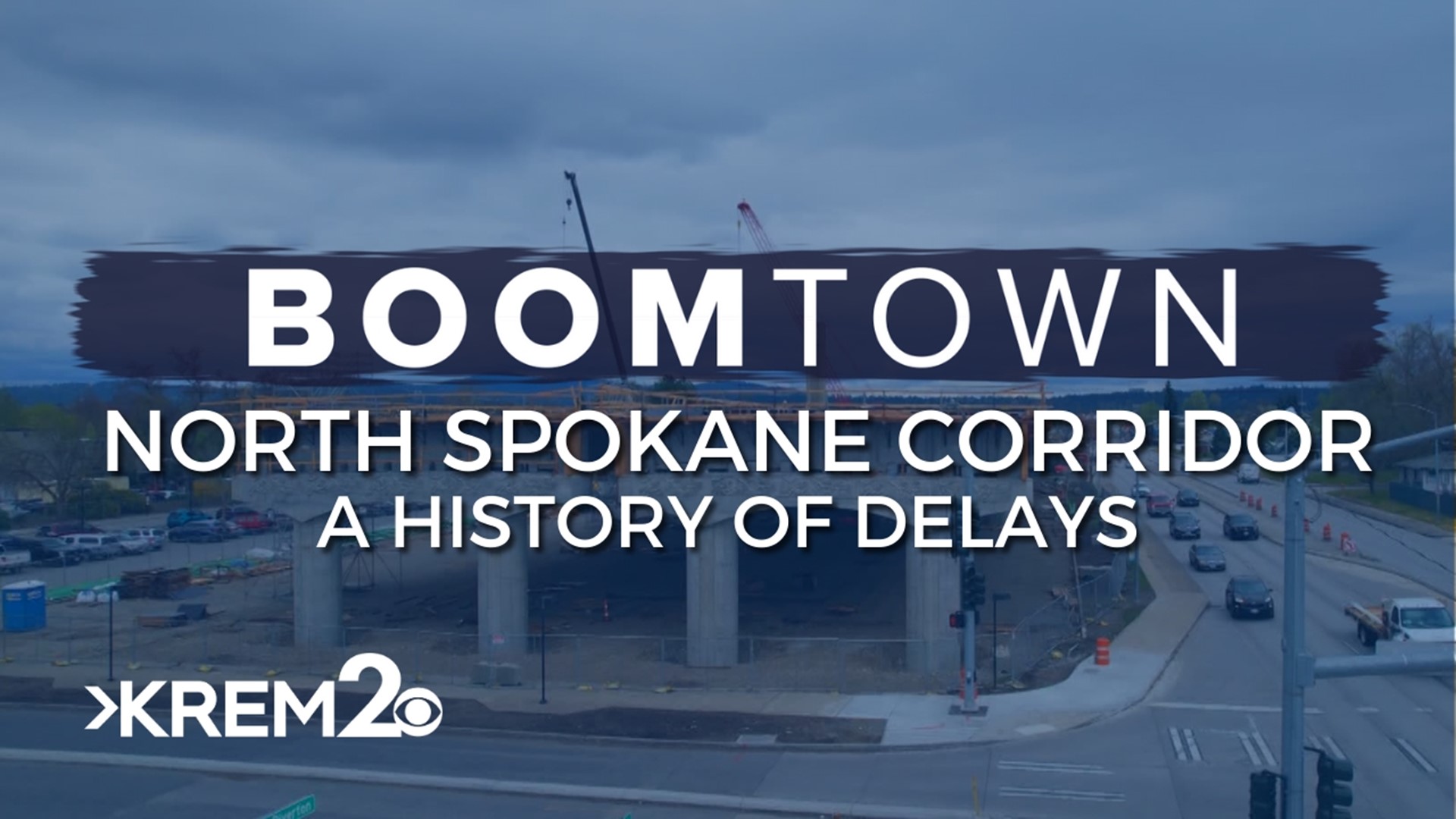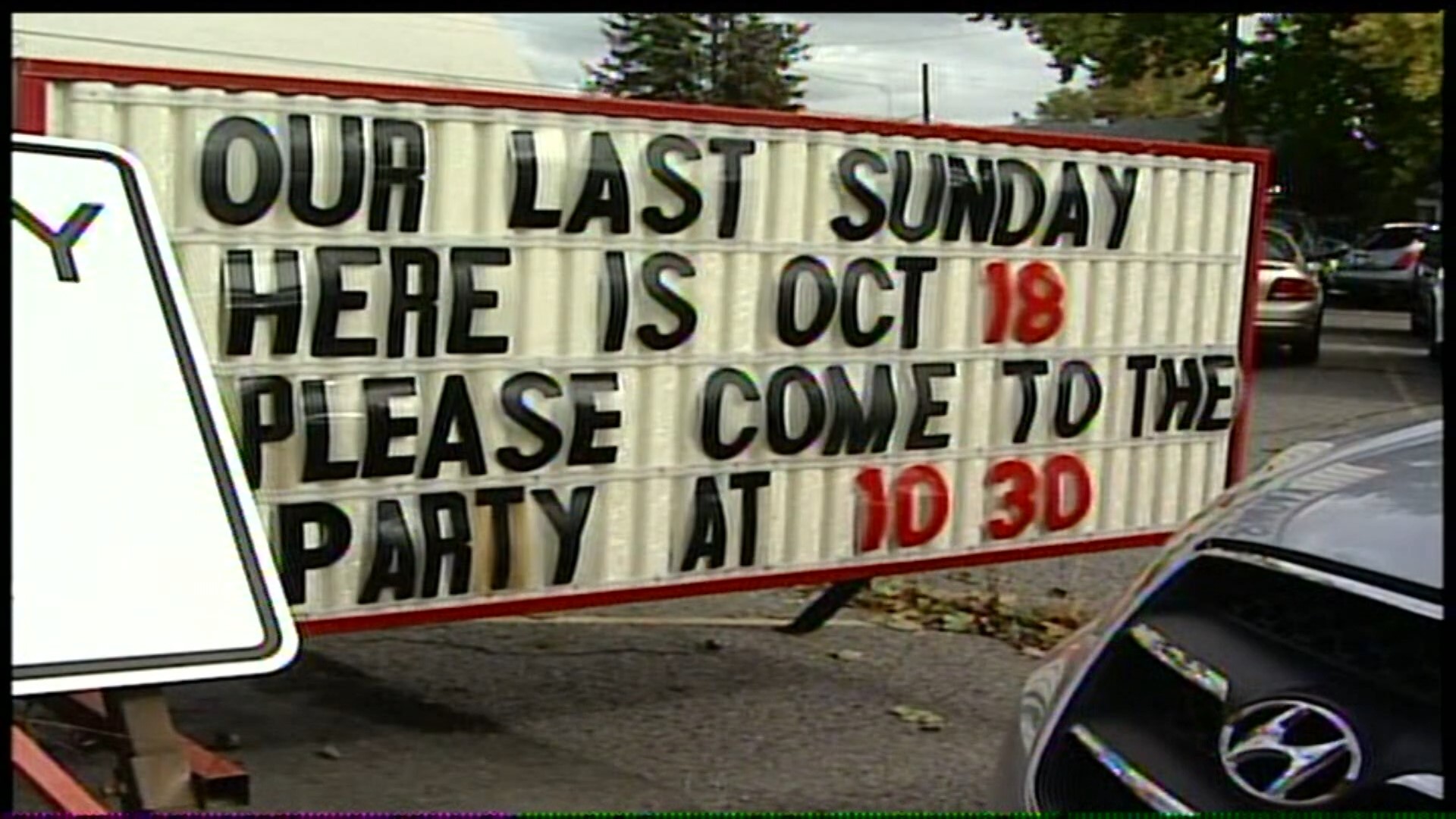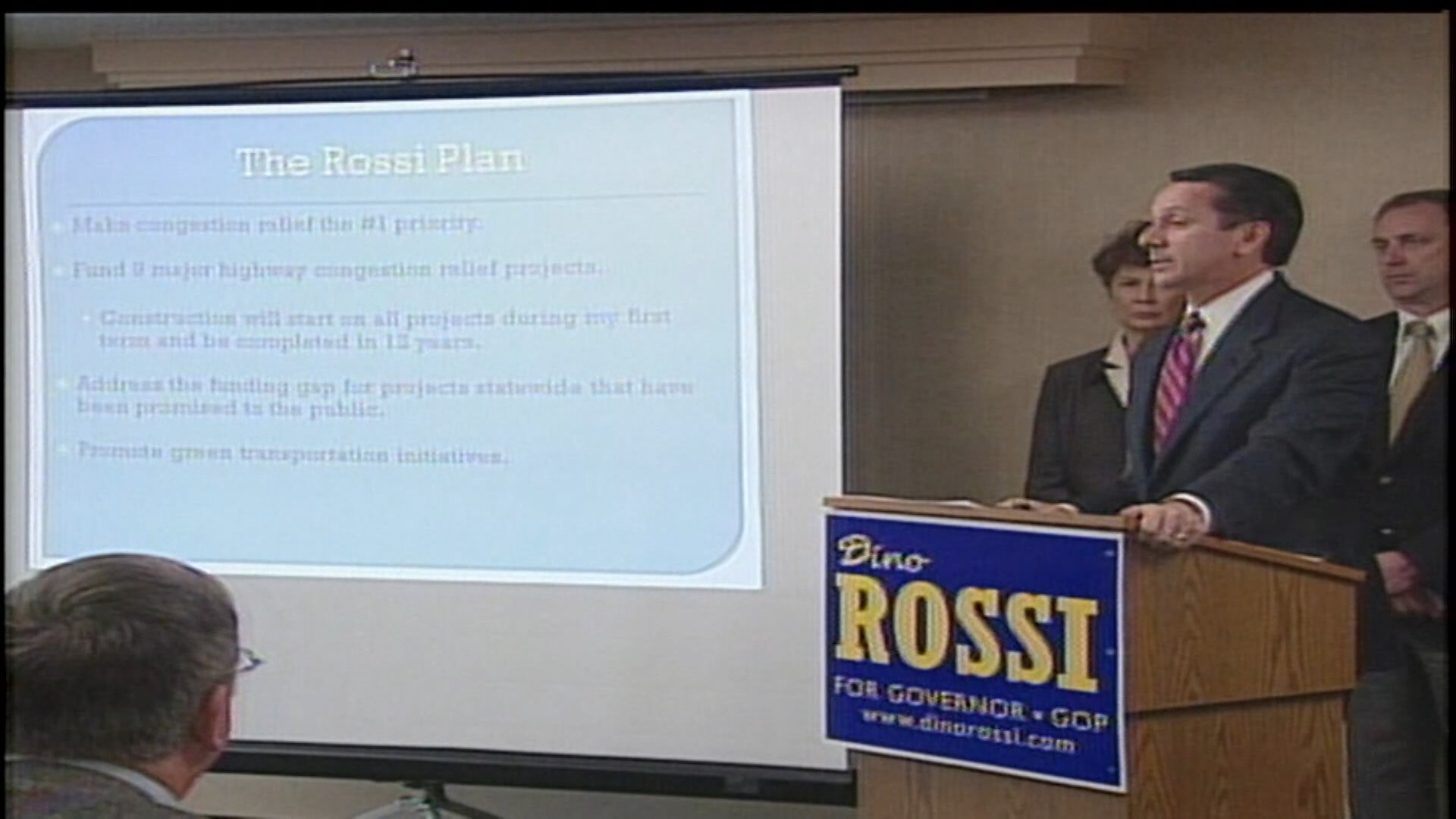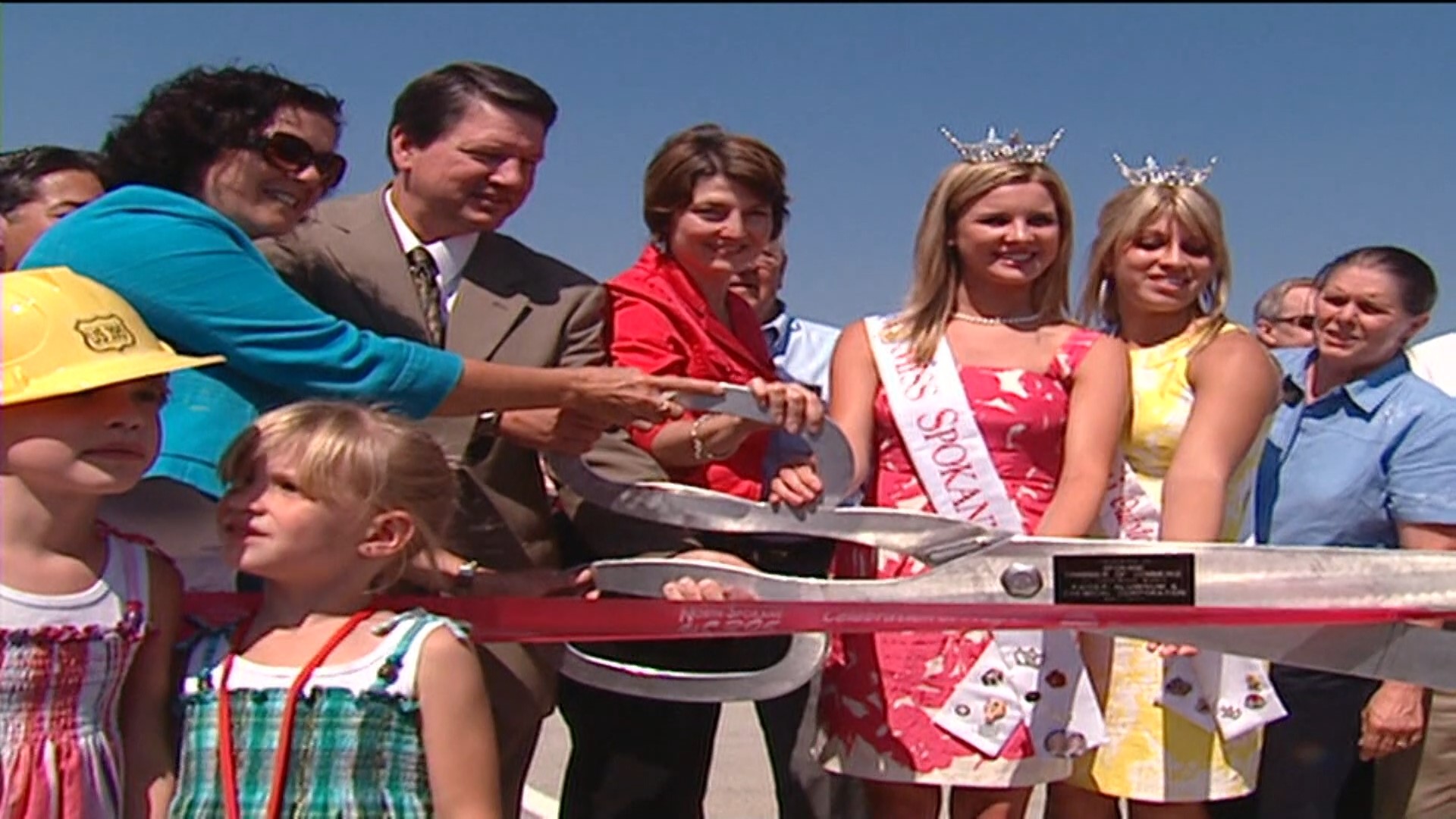SPOKANE, Wash. — The argument could be made that the North Spokane Corridor in Spokane County has been in the works longer than any other transportation project in the last century. Discussions for the freeway can be traced as far back as 1946 and continue to this day.
This project has been in the works for so long, KREM-TV was not even on the air when those talks began. But local newspapers, like the Spokane Daily Chronicle, covered the story back then, letting readers know if this project would happen.
On the front page of the Spokane Daily Chronicle on March 13, 1957, top stories included a March snowstorm and Governor Albert Rosellini trying to balance the budget. There was another headline, ‘A freeway route may be decided by 5-man panel.’ That route is the North-South Freeway, or as it’s known today, the North Spokane Corridor.


In 1957, state senator Karl Herrmann told the Spokane Daily Chronicle that the freeway "would serve as a direct route to the north country and as a short route from north side areas to the center of the city.”
While this freeway is by no means a simple project, its history has been turbulent, with hundreds of public meetings, environmental studies, delays, and funding sources. The Washington State Department of Transportation (WSDOT) is at the project's helm and tracks its history, progress, and future completion. Their project website for the North Spokane Corridor has a detailed outline of the narrative over the years.
Terrence Lynch is WSDOT’s project engineer for the NSC, he said the goal decades ago, and still, today is to take some of the burden off of the arterials.
"Relieve congestion and move, you know, people and freight from point-A to point-B much faster than using Division Street,” Lynch explained.
KREM-TV has covered the Inland Northwest’s biggest stories for nearly 70 years, this includes some of the major milestones of the North Spokane Corridor. Our archives are limited prior to the 1980s, but we did find old footage of the project in the 1990s and early 2000s when the project officially broke ground.
Bethany Presbyterian Church
The church known for the messages on its signs, Bethany Presbyterian held its last service at the corner of Freya and 4th Avenue in 2009. WSDOT approached the church in the mid-90s letting them know they wanted to buy the church’s property.
KREM 2’s Tim Pham met up with Paul Rodkey, who we featured in 2009 to tour the unfinished site where the church once stood. We showed him the story he was featured in from their last service 15 years ago.
"Did it bring any emotions? Any good memories?” Pham asked. “Oh, just good memories and good memories, because congregations are the church. It's not the building, it's the people,” Rodkey said.
Rodkey attended many public meetings when the freeway was rumored to connect to I-90 where the church’s property was.
"They had an aerial picture of like, the changes that the North Spokane Corridor was going to make and I looked down there, and I saw that Bethany indeed was in the footprint of that there's going to be a big pillar right here supporting the on-ramp that goes to I-90 east,” Rodkey recalled.
To date, WSDOT estimates they've held more than 600 public meetings connected to the freeway. At one point, in 1956, the Spokane Daily Chronicle reported a design proposed to bring the freeway through Gonzaga’s campus, cutting through Madonna Hall, which was only three years old at the time. In 1963, there was a proposal to make Division a one-way street until the freeway was completed, but if that were the case, Division would still be a one-way today.
Dino Rossi
"Going up Division, light after light after light after light,” Dino Rossi said at a press conference in 2008. Then, Rossi was the top Republican gubernatorial candidate in Washington state. He advocated for the North Spokane Corridor on the campaign trail. The freeway was one of a dozen transportation projects he wanted to be built or finished and promised to do it without raising taxes.
Rossi did not win his bid for governor but did continue a career in politics and real estate. He spoke with KREM 2’s Tim Pham about where he stands on the project 15 years later and the promise he made then.
"Do you believe that statement still?” Pham asked. "Oh, absolutely. It's still necessary and all for those very reasons, you know, of economic development for the region, you know, the northeast corner of the state is pretty well neglected, it seems like” Rossi said.
He added his feeling for the project have not changed and called the situation more dire now than it was when he ran for governor.
"You have terrific health care and Spokane, but if you can't get to it in a timely fashion, it might not really matter,” Rossi said.
KREM 2 reporter William Pitts
When going through our archives at KREM 2, we noticed a reporter covered the freeway project frequently. William Pitts worked as a reporter at KREM 2 from 2007 to 2010. He now works at our sister station KPNX in Phoenix, Arizona. He recalls his ongoing work on the project including recording a segment on an empty portion of the newly opened freeway.
"We shot that in the middle of the road, standing in a lane and I never had to dodge a car. There was nobody there, there was nobody on this road after all of that hype. Nobody seemed to care because it didn't get to anywhere that anybody needed to go."
Pitts covers a wide variety of stories in Phoenix but noticed a stark contrast in how the transportation department there worked to complete their freeway projects.
“I’ve been in phoenix for 12 years we've built two freeways and the time that I’ve been here, and you guys are still trying to get another five miles done on that freeway,” he said.
Some would say the biggest hurdle for the project is the funding and the back and forth to push the project through. For instance, in 1974 funding was deleted entirely from the budget or in 2003 when a five-cent gas tax was imposed.
However, the biggest funding accomplishment came in 2015 when the legislature passed the ‘Connecting Washington’ revenue package fully funding the project.
"But they spread the money out over 14 years. So 2015 to 2029, and we were obligated, essentially to not spend more than they gave us in each biennium or less, but basically try to find the right size projects to fit within that funding stream,” Lynch said.
Now with Governor Jay Inslee’s latest budget proposal, that funding could be in jeopardy. Inslee’s proposed transportation budget would pull funding for the North Spokane Corridor (NSC) project for four years.
"I do know how concerned the Spokane community is about this," Inslee said. "We know how important this is to the community, and I know sometimes people think, 'Well, why Spokane?' Well, it's all across the state of Washington. These projects have had to be delayed because of higher costs, less money available, less contractors available, and I'm hopeful that we can find something to not have to do this delay."
Though Rossi has no political stake in the project, he said he still hopes the budget includes funding for the project until it is complete.
“What I’d say to people in office now it's long overdue. Come on, take care of this, this matters, this matters for the region,” Rossi said.
DOWNLOAD THE KREM SMARTPHONE APP
DOWNLOAD FOR IPHONE HERE | DOWNLOAD FOR ANDROID HERE
HOW TO ADD THE KREM+ APP TO YOUR STREAMING DEVICE
ROKU: add the channel from the ROKU store or by searching for KREM in the Channel Store.
Fire TV: search for "KREM" to find the free app to add to your account. Another option for Fire TV is to have the app delivered directly to your Fire TV through Amazon.
To report a typo or grammatical error, please email webspokane@krem.com.




